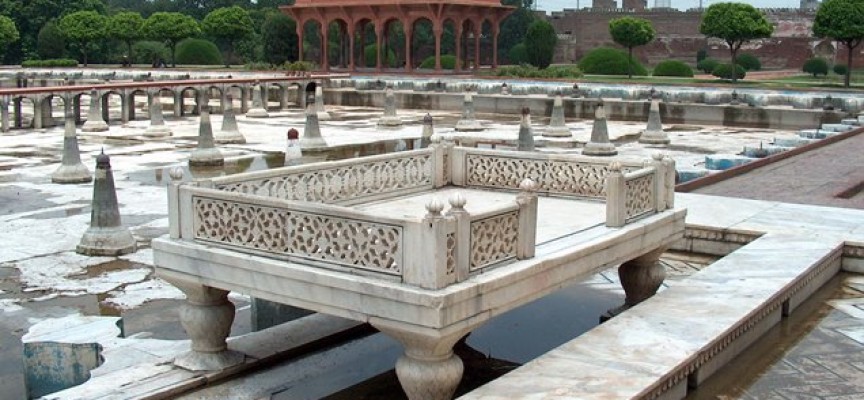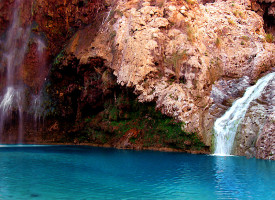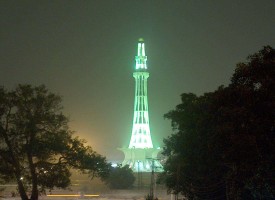“And the gardens and the agreeable pavilions which had been erected about the grounds, which all vied with the heavens in grandeur, were now found suitable to the royal taste. In fact never before had a garden of such magnificent description been seen or heard of; for the buildings alone of this earthly Paradise had been erected at an outlay of six lakhs of rupees” (ibid., 298).
One of the most magnificent gardens of the Mughal era, the Shalimar garden, used to be place where the royals came to relax when visiting the eastern suburbs of Lahore.
If you imagine those times you realize that the Shalimar garden was situated quite far away from the main city and it took at least a few hours journey to get to it. Nevertheless, it was a popular retreat amongst the royals. Today however, the Shalimar garden is located along the Grand Trunk Road, near Baghbanpura, at a distance of approximately 5 kilometers northeast of the main city of Lahore.
One can also see that the construction of the garden was closely integrated to the river Ravi. Back then the garden stood alone on the bank of the river with its terraces stepped grandly down to the river’s floodplain. It was the Ravi from which a canal led to the garden to feed the hundreds of fountains, pools, and plantation.
Construction on the magnificent Shalimar garden began in 1641 on the orders of the great Mughal emperor Shah Jahan and the garden was officially inaugurated in 1642. The garden was inspired by the gardens of five places, namely Central Asia, Kashmir, Western Punjab, Persia, and the Delhi Sultanate.
Shah Jahan wanted to bring the beauty of the Kashmiri gardens to the plains. Today the garden is a UNESCO World Heritage Site.
Shalimar’s Architecture
The Shalimar Garden is shaped as an oblong parallelogram and is enclosed within a brick wall with intricate work.
The architecture is such that the garden is designed from south to north in three levels of terraces called:
- Hayat Baksh – the first terrace
- Faiz Baksh – the second terrace
- Farah Baksh – the third terrace
The Shalimar garden also boasts 410 fountains that render the surrounding area cooler.
Buildings within Shalimar
There are various buildings and structures in the garden. These include:
- Sawan Bhadun pavilions
- Diwan-e-Khas-o-Aam
- Khwabgah
- The Hammam
- Naqar Khana and its buildings
- Khawabgah of the emperor’s wife
- Baradaries
- The Aiwan
- Aramgah
- Two gateways and minarets in the corners of the Gardens
Overall the Shalimar garden is a masterpiece of Mughal construction and a beautiful place to visit when in Lahore.







Very beautifull historic garden.